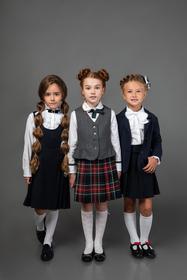P.S. 9 The Sarah Smith Garnet School is a public elementary school of the New York City Department of Education, located in the Prospect Heights neighborhood of Brooklyn, New York City. The school was previously named "Teunis G. Bergen."
Serving 771 students in grades Prekindergarten-5, P.s. 9 Sarah Smith Garnet School ranks in the top 50% of all schools in New York for overall test scores (math proficiency is top 50%, and reading proficiency is top 50%).
The percentage of students achieving proficiency in math is 51% (which is lower than the New York state average of 52%). The percentage of students achieving proficiency in reading/language arts is 60% (which is higher than the New York state average of 49%).
The student-teacher ratio of 17:1 is higher than the New York state level of 11:1.
Minority enrollment is 67% of the student body (majority Black), which is higher than the New York state average of 60% (majority Hispanic and Black).
Quick Facts (2025-26)
- Grades: Prekindergarten-5
- Enrollment: 771 students
- Student-Teacher Ratio: 17:1
- Minority Enrollment: 67%
- Overall Testing Rank: Top 50% in NY
- Math Proficiency: 51% (Top 50%)
- Reading Proficiency: 60% (Top 30%)
- Science Proficiency: 85-89% (Top 50%)
- Source: National Center for Education Statistics (NCES), NY Dept. of Education
Top Rankings
P.s. 9 Sarah Smith Garnet School ranks among the top 20% of public schools in New York for:
Category
Attribute
Diversity
School Overview
P.s. 9 Sarah Smith Garnet School's student population of 771 students has declined by 18% over five school years.
The teacher population of 45 teachers has declined by 18% over five school years.
Grades Offered
Grades Prekindergarten-5
(Supplemental Virtual)
(Supplemental Virtual)
Total Students
771 students
Gender %
Total Classroom Teachers
45 teachers
Year Founded
1905
School Calendar
Last Day of School
Fri. Jun 26, 2026
School Rankings
P.s. 9 Sarah Smith Garnet School ranks within the top 50% of all 4,346 schools in New York (based off of combined math and reading proficiency testing data).
The diversity score of P.s. 9 Sarah Smith Garnet School is 0.74, which is more than the diversity score at state average of 0.72. The school's diversity has stayed relatively flat over five school years.
Overall Testing Rank
#1700 out of 4346 schools
(Top 50%)
(Top 50%)
Math Test Scores (% Proficient)
51%
52%
Reading/Language Arts Test Scores (% Proficient)
60%
49%
Science Test Scores (% Proficient)
85-89%
78%
Student-Teacher Ratio
17:1
11:1
American Indian
1%
1%
Asian
7%
10%
Hispanic
23%
30%
Black
32%
16%
White
33%
40%
Hawaiian
n/a
n/a
Two or more races
4%
3%
All Ethnic Groups
Participates in the National School Lunch Program (NSLP)
Yes
Eligible for Free Lunch
38%
54%
Eligible for Reduced Lunch
1%
3%
School Statewide Testing
School District Name
Source: National Center for Education Statistics (NCES), NY Dept. of Education
School Notes
- School Mascot: Bee
Profile last updated: 02/09/2025
Frequently Asked Questions
What is P.s. 9 Sarah Smith Garnet School's ranking?
P.s. 9 Sarah Smith Garnet School is ranked #1700 out of 4,346 schools, which ranks it among the top 50% of public schools in New York.
What schools are P.s. 9 Sarah Smith Garnet School often compared to?
P.s. 9 Sarah Smith Garnet Schoolis often viewed alongside schools like P.s. 316 Elijah Stroud, P.s. 11 Purvis J Behan by visitors of our site.
What percent of students have achieved state testing proficiency in math and reading?
51% of students have achieved math proficiency (compared to the 52% NY state average), while 60% of students have achieved reading proficiency (compared to the 49% NY state average).
How many students attend P.s. 9 Sarah Smith Garnet School?
771 students attend P.s. 9 Sarah Smith Garnet School.
What is the racial composition of the student body?
33% of P.s. 9 Sarah Smith Garnet School students are White, 32% of students are Black, 23% of students are Hispanic, 7% of students are Asian, 4% of students are Two or more races, and 1% of students are American Indian.
What is the student-teacher ratio of P.s. 9 Sarah Smith Garnet School?
P.s. 9 Sarah Smith Garnet School has a student ration of 17:1, which is higher than the New York state average of 11:1.
What grades does P.s. 9 Sarah Smith Garnet School offer ?
P.s. 9 Sarah Smith Garnet School offers enrollment in grades Prekindergarten-5 (Supplemental Virtual).
What school district is P.s. 9 Sarah Smith Garnet School part of?
P.s. 9 Sarah Smith Garnet School is part of New York City Geographic District #13.
In what neighborhood is P.s. 9 Sarah Smith Garnet School located?
P.s. 9 Sarah Smith Garnet School is located in the Prospect Heights neighborhood of Brooklyn, NY. There are 1 other public schools located in Prospect Heights.
School Reviews
5 10/10/2025
Excellent community school with involved parents, teachers and administrators. The school is committed to enrichment education and hosts an excellent gifted and talented program.
Review P.s. 9 Sarah Smith Garnet School. Reviews should be a few sentences in length. Please include any comments on:
- Quality of academic programs, teachers, and facilities
- Availability of music, art, sports and other extracurricular activities
Recent Articles

Charter Schools vs Public Schools 2025: Key Differences & Trends
Explore updated 2025 insights comparing charter schools vs public schools, enrollment, academic outcomes, funding, and real-world examples for families and educators.

Are Public Schools Ready for the 21st Century? 2025 Update
Explore 2025 insights on whether public schools are ready for the 21st century, covering performance, technology, equity, funding, and future-ready learning.

Public School Open House & Enrollment Season Guide
A parent-focused guide to the public school open house and enrollment season, with expert questions, timelines, and decision tips.





